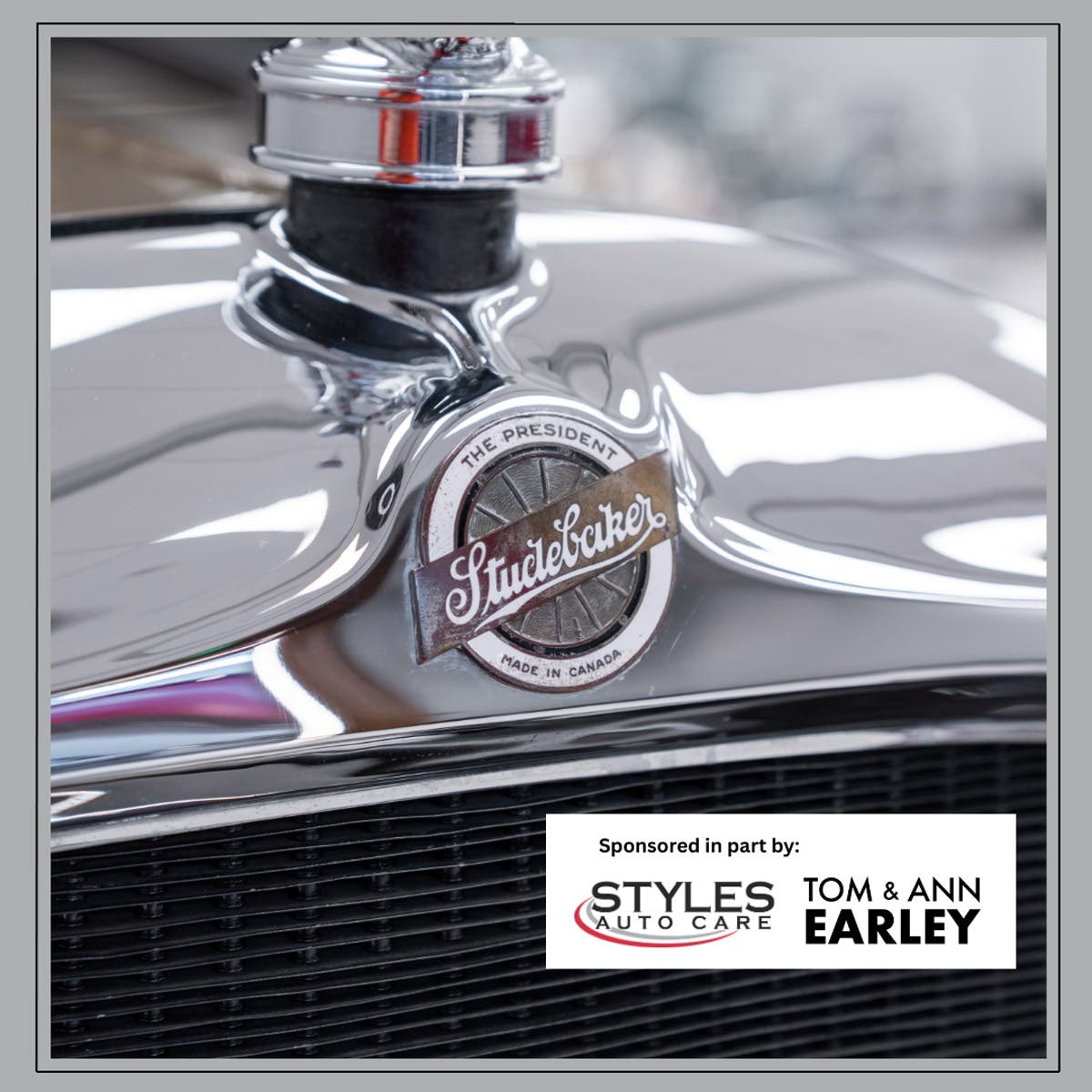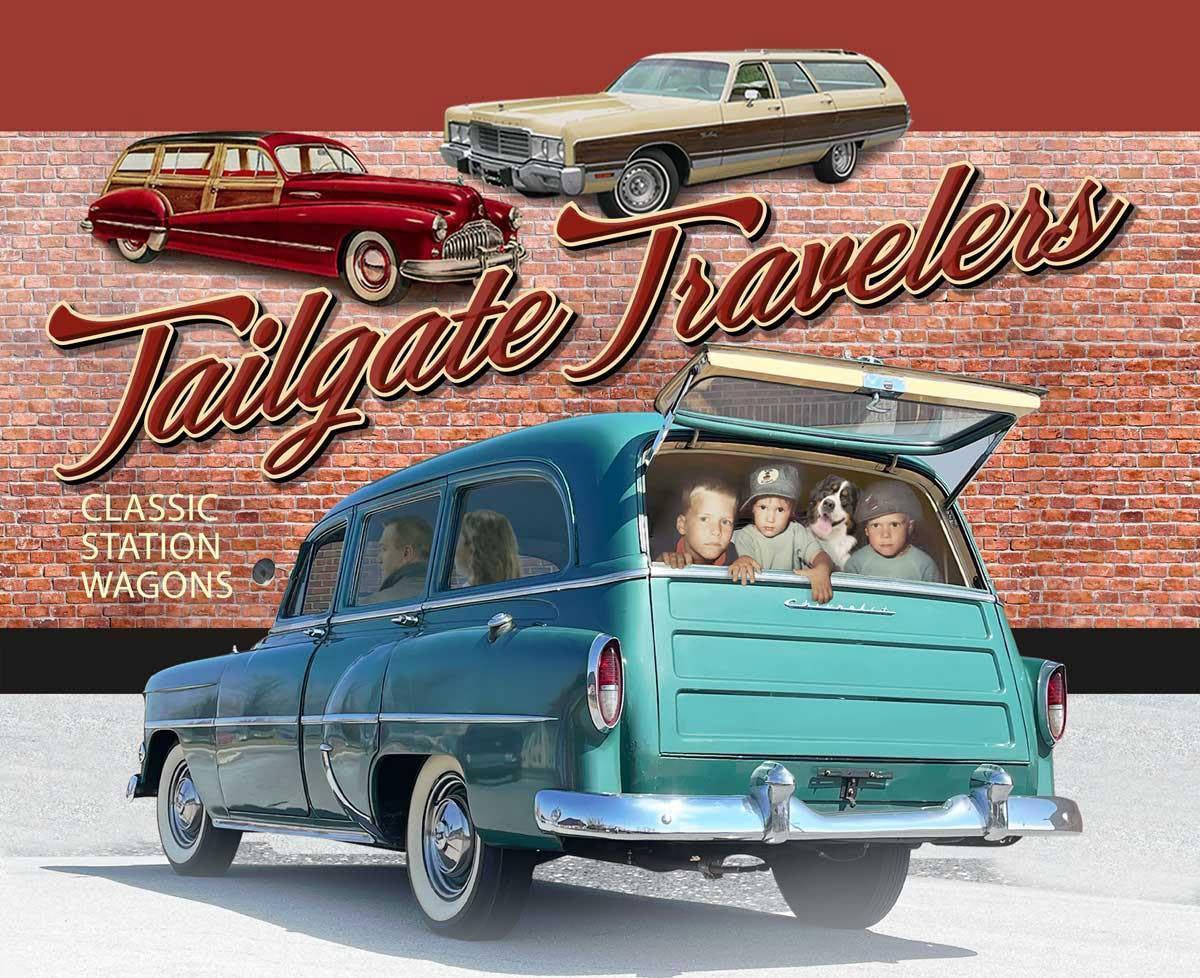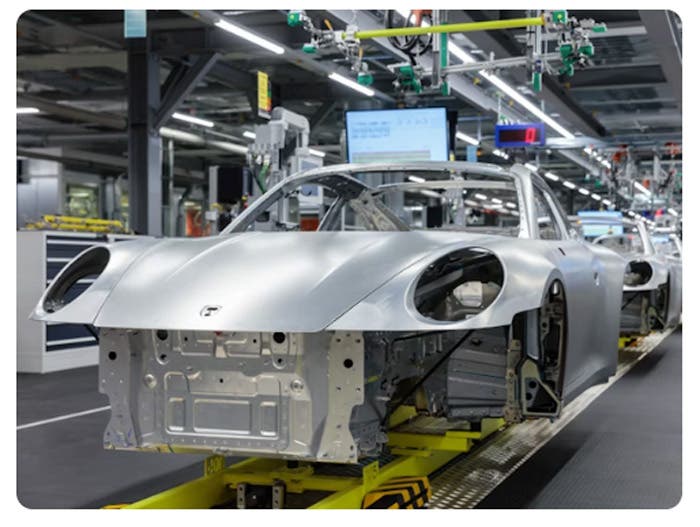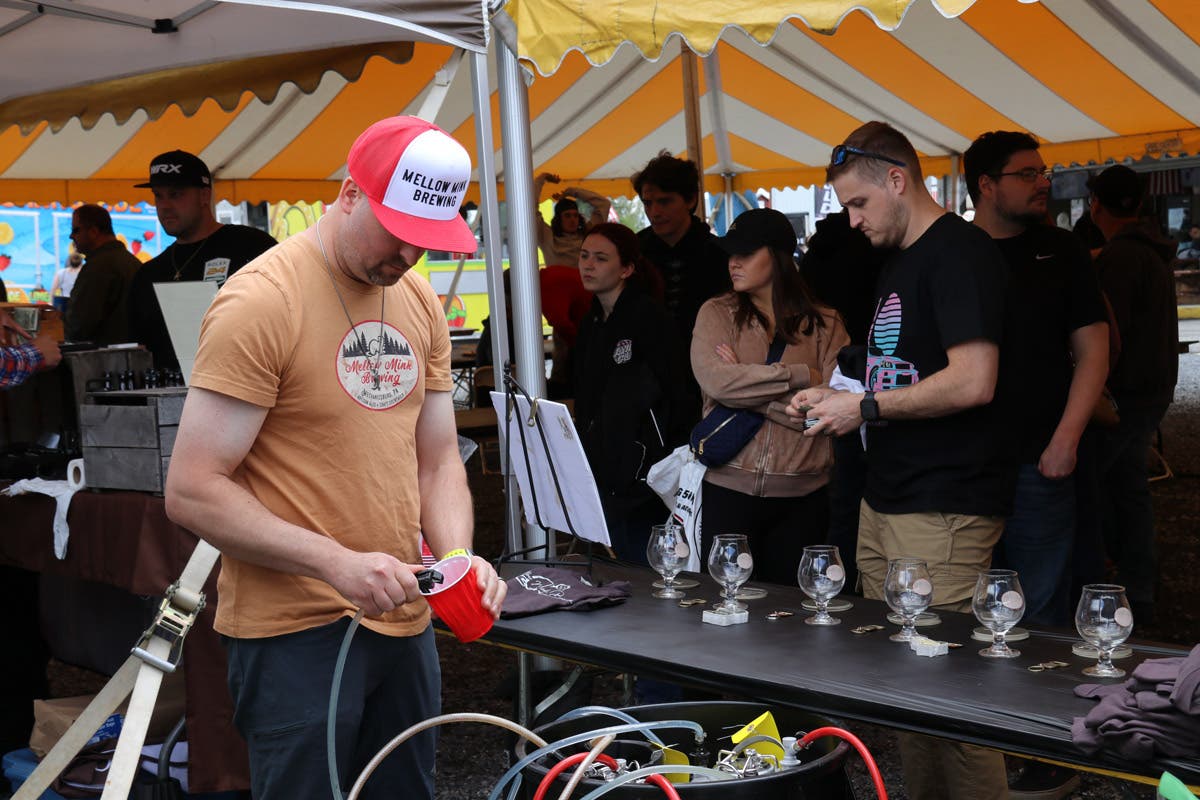The Society of Automotive Historians names award recipients
The Society of Automotive Historians is celebrating its 50th Anniversary in 2019. They are a group of automotive enthusiasts numbering about 800 from over 20 countries around the globe who are…
The Society of Automotive Historians is celebrating its 50th Anniversary in 2019. They are a group of automotive enthusiasts numbering about 800 from over 20 countries around the globe who are passionate about researching and recording all aspects of automotive history. Nearly all significant automotive authors past and present have been or are members.
Below is a listing of the recipients of awards given for a variety of automotive history activities.
The Annual Meeting of Members & Gala Awards Banquet took place on Friday, October 12th at the Hershey Country Club during “Hershey”—the AACA Eastern Regional Fall Meet (October 10-13). The highlight of the evening was the awards presentation. Here are the awards, descriptions and the 2018 recipients:
Carl Benz Award
“Race to the Clouds: The Pikes Peak Hill Climb, Parts 1 and 2” by David Bellm, published in Vintage Motorsport (part 1: Jan/Feb 2017, part 2: Mar/Apr 2017).
The Benz Award recognizes the periodical article or series published during the previous calendar year which exhibits the most original research and outstanding writing in automotive history. The award is named for Carl Benz, who built the first vehicle propelled by an internal combustion engine. Benz’s three‑wheeled vehicle was built in 1885 in Mannheim, Germany. The Benz Award was first presented in 1982. From 1972 until 1981, awards for periodical articles were made as part of the Cugnot Award.
The article was an expertly-prepared work, thoroughly researched, written with a very smooth and linear flow and lavishly illustrated with period photography, Add to that, it was presented with an attractive and action-oriented page layout, which made the article the clear over-the-top winner in our evaluations.
—Don Keefe
Nicolas-Joseph Cugnot Award
The Cugnot Award is presented for the book published during the previous calendar year which represents the most outstanding writing and original research in automotive history. The award is named for Nicolas‑Joseph Cugnot, a French Army officer who is generally acknowledged to have built the first self‑propelled vehicle. His steam‑powered fardier, built in 1769, was designed to be an artillery tractor; its likeness appears on the Society’s emblem. The Cugnot Award was first presented in 1972, and the award for books written in a language other than English was first presented in the year 2000. The Award of Distinction in each category recognizes works of exceptional merit.
English Language:
Blood Sweat and Fear: Violence at Work in the North American Auto Industry, 1960-1980by Jeremy Milloy, published by UBC Press. ISBN: 978-0774834537
Labor relations is an aspect of automotive history that merits wider study. This small but powerful book describes the industry at its lowest point and one that may mark the beginning of the end for Chrysler. Well researched and strongly presented. A wider study might have addressed the others of the big three to see why they were better able to survive during the turbulent 1960s and 70s
—Douglas Leighton
Award of Distinction:
Shelby Mustang GT350by Chuck Cantwell with Greg Kolasa, published by David Bull Publishing. ISBN: 978-1935007296
The gold standard of automotive history—the events of the period told by the principal actor. We are given the story in the actions and actual words of the players—remarkable considering it all happened fifty years ago. The difficult relations between Shelby American and Ford Motor Company are set out perhaps for the first time. How a “secretary’s car” beat the Corvette first time out! This will be the definitive work on the GT350.
—Douglas Leighton
Language other than English:
Lorraine-Dietrich : De la voiture de grand luxe au géant de l'aéronautique by Sébastien Faurès Fustel de Coulanges, published in French by Editions Techniques pour l'Automobile et l'Industrie. ISBN: 979-1028302207
This comprehensive study traces the history of one of France’s preeminent manufacturers from its beginnings in the railroad trade in German-occupied Alsace through the French luxury automotive market in the postwar period to mid-priced and successful sporting cars in the nineteen-twenties ending with nationalization in 1937. With such a checkered history it presents a micro image of the French industrial economy across a turbulent half century.
Lorraine Dietrich gained many of its successes through licenses and joint ventures with other firms, both French and foreign. This was a period when the nameplate on the product did not always hint at the actual source of its technology, much like the automotive world of our own time. Like several of its competitors, it ended up with the production of military aero engines for the worldwide conflict to come.
The author leads us through the complex channels of its multinational businesses to an appreciation of the challenges of the European automotive market in the interwar period during which the French automotive world evolved to the domination of a small group of producers, a process not complete until the nineteen fifties. This is a timely and well-told story.
—Arthur Jones
Award of Distinction:
Encyklopedia Poznańskiej Motoryzacji by Dobiesław Wieliński, published by Black Horse. ISBN: 978-8394626020
This book presents a survey of automotive development in the western part of Poland from its start with the selling of imported cars, later dominated by Ford and General Motors, the local production of motorcycles, car bodies and parts for assembly before the war to the building of eastern European makes during the period of Soviet domination. Although not a center of the automotive world as we usually think of it, the Poznan Motor Show has been held since 1921 and there continue to be sports clubs, brand hobby clubs, rallies and an active local motorsports scene.
The author has reminded us that the world of the car is universal and not limited to the well-publicized makes and events to which we all turn our attention.
—Arthur Jones
James J. Bradley Distinguished Service Award
Canada Science and Technology Museum, Ottawa, Ontario.
Award presented to a deserving library or archive, or to an individual within such an organization, for the preservation of historic materials relating to motor vehicles of the world. It is named in memory of James J. Bradley, noted curator of the National Automotive History Collection at the Detroit Public Library. The Bradley Award was first presented in 1982.
Canada’s national science and technology museum in Ottawa houses one of the most important collections of automotive artifacts and archives in North America, with special emphasis on all things Canadian, hence its institutional uniqueness and historical significance. The artifact collection comprises 95 automobiles, 10 trucks, 5 buses, 60 motorcycles, 180 bicycles, and about 300 automotive parts. The library and archival collections related to automobiles and automobility are particularly rich. They include a special collection of over 8,000 automobile advertisements, more than 10,000 automobile brochures, design drawings, and fire vehicle-related materials. The library also holds significant collections of rare books as well as more than 1,000 other monographs relating to transportation, motorized and non-motorized. In short, the museum is aimed at celebrating Canadian automotive heritage with its collections growing year by year. As such, the Bradley Award Committee made the argument that it was richly deserving of this year's award.
—Edward Garten
Richard P. Scharchburg Student Paper Award
"Shanghai Taxi" by Adam and Shuang Frost - Harvard University.
The Student Paper Award recognizes the best paper by a thesis-level student at an educational institution. The award is accompanied by a cash prize and publication of the paper by the Society. The award was first presented in 2001. It was renamed in 2008 in memory of SAH director, officer and professor Richard P. Scharchburg.
Shuang and Adam are Harvard graduate students in the departments of Anthropology and History, respectively. This remarkable paper stood out among five submissions, as it chronicled the role of automobiles and entrepreneurship in the building of Shanghai’s urban infrastructure between the 1911 and 1949. Their work serves as one step in bringing China into global narratives of automotive history.
At the heart of this paper is the life of “Taxi King” Zhou Xiangsheng, and the development of his company, Johnson Taxi. Xiangsheng began his business as an illicit taxi operator (a “wild chicken”) in the 1920s. He subsequently emerged as a successful business owner whose success was due to his ability to move fluidly among Western and Eastern cultures, employ a number of communication technologies, and take advantage of global economic transitions to purchase a fleet of 400 Chevrolets in 1931. His ability to adapt was demonstrated time and time again, whether it was after Japanese occupation or the communist revolution.
In a broader sense, and in the words of the authors, “Chinese taxi networks were more than the sum of their cars on the streets. Rather, they were systems comprised of human, material, and discursive elements, which existed on a spectrum from the invisible to the spectacular. At the one end, webs of informal labor promoted urban interconnectivity and traversed Shanghai’s administrative divides, while at the other, embedded political symbols reshaped how people consumed transportation services. These dimensions of infrastructure . . . played a critical role in the shaping of his global metropolis.”
Extremely well written, highly interdisciplinary, and based on an excellent mix of primary and secondary sources, including Chinese newspapers and film, Shuang and Adam Frost’s “Taxi Shanghai” is a most worthy recipient of the 2018 Scharchburg Award.
—John Heitmann
Richard and Grace Brigham Award
Collectible Automobile - John Biel, Editor in Chief.
The Brigham Award is presented to the periodical which exhibits the best overall treatment of automotive history over all issues published during the previous calendar year. A publication may receive the Brigham Award only once in a five-year period. Mrs. Brigham and her late husband, both founding members of the Society, started the Society’s newsletter, now SAH Journal, and magazine, Automotive History Review. The Brigham Award was first presented in 1990.
Upon returning home from school one day in the mid-1980s I remember my father saying, “Hey, there’s a new car magazine out” and showed me a slick glossy volume filled with color images and a wide variety of articles penned by some the field’s foremost authors. Since its debut, Collectible Automobile has only improved upon its high standards and remains a flagship publication of automotive history.
—Andrew Beckman
E.P. Ingersoll Award
Billy Dunbar, for ChevroletBrothers.com
The Ingersoll Award recognizes excellence in presentation of automotive history in other than print media. E.P. Ingersoll was editor and proprietor of The Horseless Age, the first motoring magazine in the United States, and was instrumental in organizing the first vehicle trade organization. The Ingersoll Award was first presented in 1992.
Among a varied group of worthy contenders for the E.P. Ingersoll Award this year, one nominee stood out for the wealth of material it offers the automotive historian. The website ChevroletBrothers.com, a project of Billy Dunbar, is devoted to preserving the history of the three brothers and advancing research particularly on Louis.
The emphasis is on presenting period sources, including primary ones. The site delivers more than 850 rare photographs, 500 newspaper and trade journal articles, and 300 pages of original signed documents. These include such rarities as photos from the Chevrolet family scrapbooks, long-out-of-print interviews, and letters that illuminate the brothers’ history-making careers. If you want to see Louis at speed, battling a race car in flames, or corporate documents from Arthur and Louis’s aircraft companies, or Gaston enjoying a sunny afternoon with his dog, two years before his tragic death, you’ll find it all here.
Remarkably, all of these riches are provided free of charge, and indeed the site has no commercial component. Navigation is simple; organization is logical; the site functions cleanly and quickly. The committee considers this website to represent a significant step forward in the study of the Chevrolet brothers and is delighted to present the 2018 E.P. Ingersoll Award to ChevroletBrothers.com.
Friend of Automotive History Award
Jeffrey I. Godshall and Doug Nye
A person who has exhibited outstanding service in, and made outstanding contributions to, the field of automotive history may be named a Friend of Automotive History. This award is not limited to members of the Society. It was first presented in 1983.
Jeff Godshall: I would be surprised if most of you did not have examples of the 2018 Friend of Automotive History recipient’s works lining your bookshelves, as this gentleman is one of the field’s most prolific authors. His first automotive “crush” occurred when he spotted a coffin-nosed Cord, which led to a lifelong passion for the Cord and its Graham and Hupp descendants. He spent over four decades in the world of automobile design, most notably for the Chrysler Corporation. After retirement, our honoree was a fixture at the Eyes on Design, Henry Ford Museum’s Motor Muster and the Orphan Car Show, serving as judge or narrator at these prestigious events.
Doug Nye: The second 2018 Friend of Automotive History winner is a legend of motorsports journalism. From his early days as a freelance writer for Motor Sport and Motor Racing magazines to his comprehensive histories of Cooper, BRM, Chapparal, McLaren, and Lotus, this gentleman’s body of work is truly staggering. He continues to serve the field through associations with many prestigious organizations including The Collier Collections, The REVS Institute, the Dutch National Motor Museum and the Brooklands Museum, to name a just a few.
—Andrew Beckman
Society of Automotive Historians
www.autohistory.org








